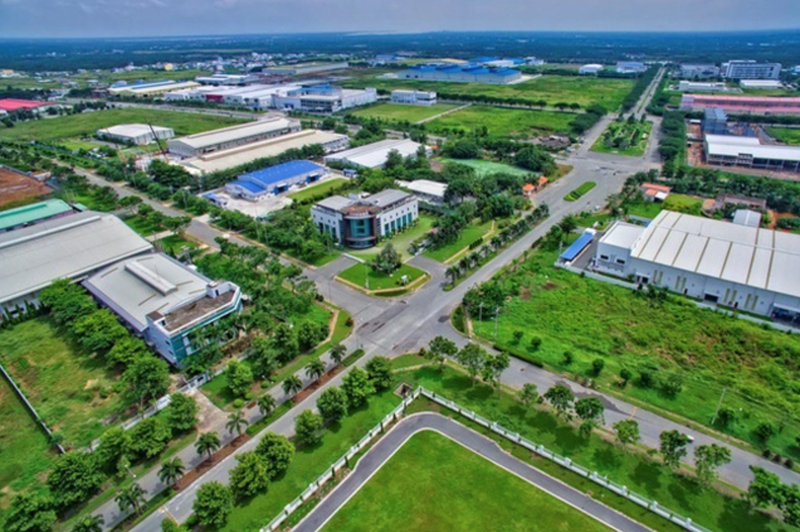Industrial parks (IPs) are now on the way to ensuring a balance between the economy, society, and the environment for sustainable development and green growth.
Concentrated wastewater drainage systems are in place at 267 of the 295 IPs in operation nationwide, or 90.5 per cent.
According to Ms. Vuong Thi Minh Hieu, Deputy Director of the Economic Zones Management Department at the Ministry of Planning and Investment, who was one of the speakers at the Vietnam Industrial Parks Forum 2023 on November 16, with the theme “Towards Green Growth”, as of the end of October, since the setting up of the first IP, the Tan Thuan Export Processing Zone, in Ho Chi Minh City in 1991, the total number of IPs has reached 413 nationwide, including 369 outside of economic zones, 37 inside coastal economic zones, and seven in border gate economic zones, covering an area of nearly 120,000 ha in total, of which industrial land stood at 87,700 ha.
Of the 413 IPs, 295 covering a total area of 92,000 ha, including 63,000 ha of industrial land, have been put into operation. Meanwhile, 118 others are under construction, covering a total area of 37,500 ha, including 24,700 ha of industrial land. The occupation rate at operating IPs is about 73 per cent on average.
Under plans for the development of coastal economic zones approved by the Prime Minister, 19 such zones cover a total area of 871,500 ha, including 583,100 ha of land (or 1.75 per cent of the national land area), and 288,400 ha of sea area.
Regarding State management over IPs, according to Ms. Hieu, a law on industrial and economic zones will be built to encourage the effective their operations, including favorable conditions for them to compete globally.
She said that to achieve the goal of sustainable development it is necessary to be selective in investments and not develop IPs on fertile agricultural land, especially high-yielding rice fields, and in regions where site clearance and compensation would be difficult.
Procedures for securing IP investment licenses have been simplified, she added, with ten regulations from Government Decree No. 82/2018/ND-CP reduced to six under Decree No. 35/2022/ND-CP.
Dr. Nguyen Cong Ai, Deputy General Director of KPMG Vietnam, another speaker at the forum, noted the negative impact from the fact that the US and Europe want to reclaim some investment capital flows to ensure independence in their economies, for fear that economic globalization may make their economies unsafe.
That, according to Dr. Ai, may negatively impact Vietnam’s FDI flows.
In the first nine months of this year, FDI into Vietnam increased 7.7 per cent year-on-year. It is expected that the increase will continue in the final quarter of the year, as investors from Northeastern Asia, like China, Japan, and South Korea, remain among the largest in terms of capital.
However, according to Dr. Ai, the US is still expected to pour more investment capital into Vietnam, as a result of the Comprehensive Strategic Partnership established during President Joe Biden’s visit to Vietnam in September.
According to a survey conducted by KPMG Vietnam on 200 FDI enterprises, the factors deciding their investment in an IP is location and then human resources and primary infrastructure such as electricity and water supply.
The Vietnamese Government should map out a national strategy for FDI attraction, with flexible policies in the context of complex economic and geopolitical developments globally.









 Google translate
Google translate